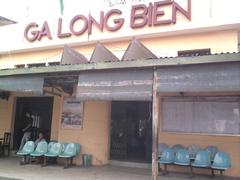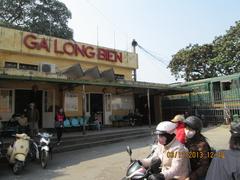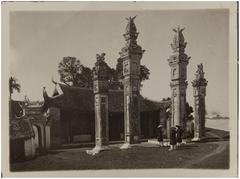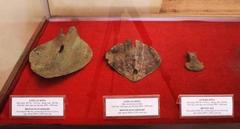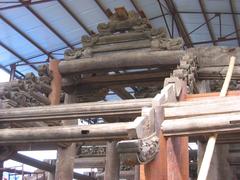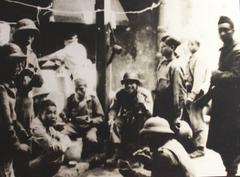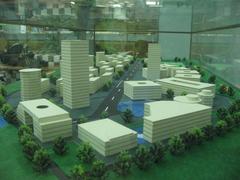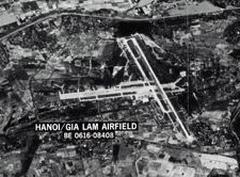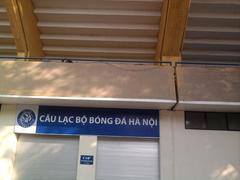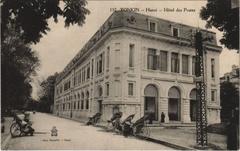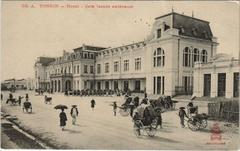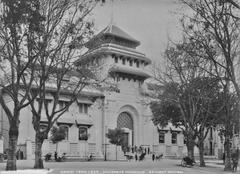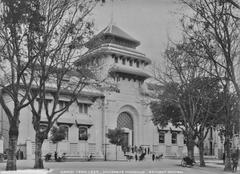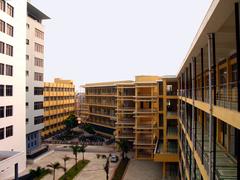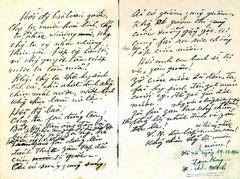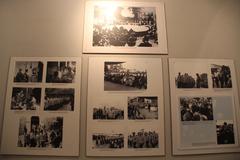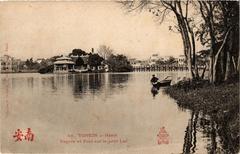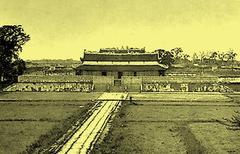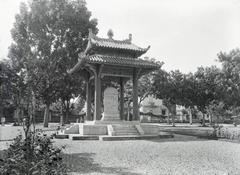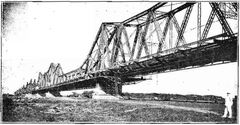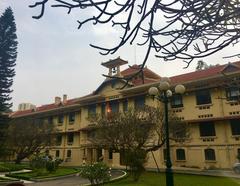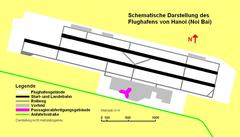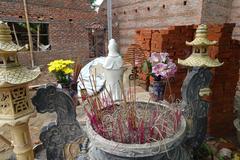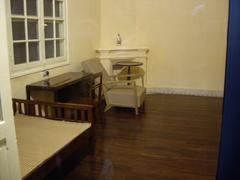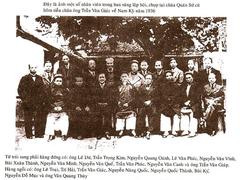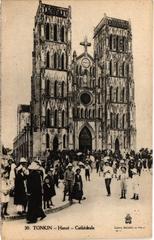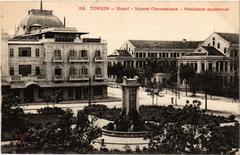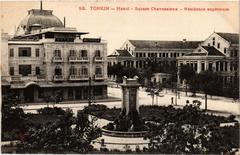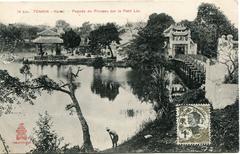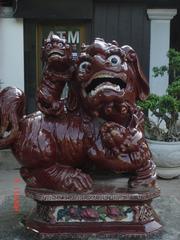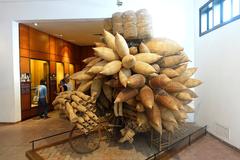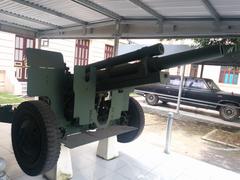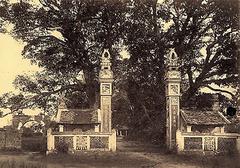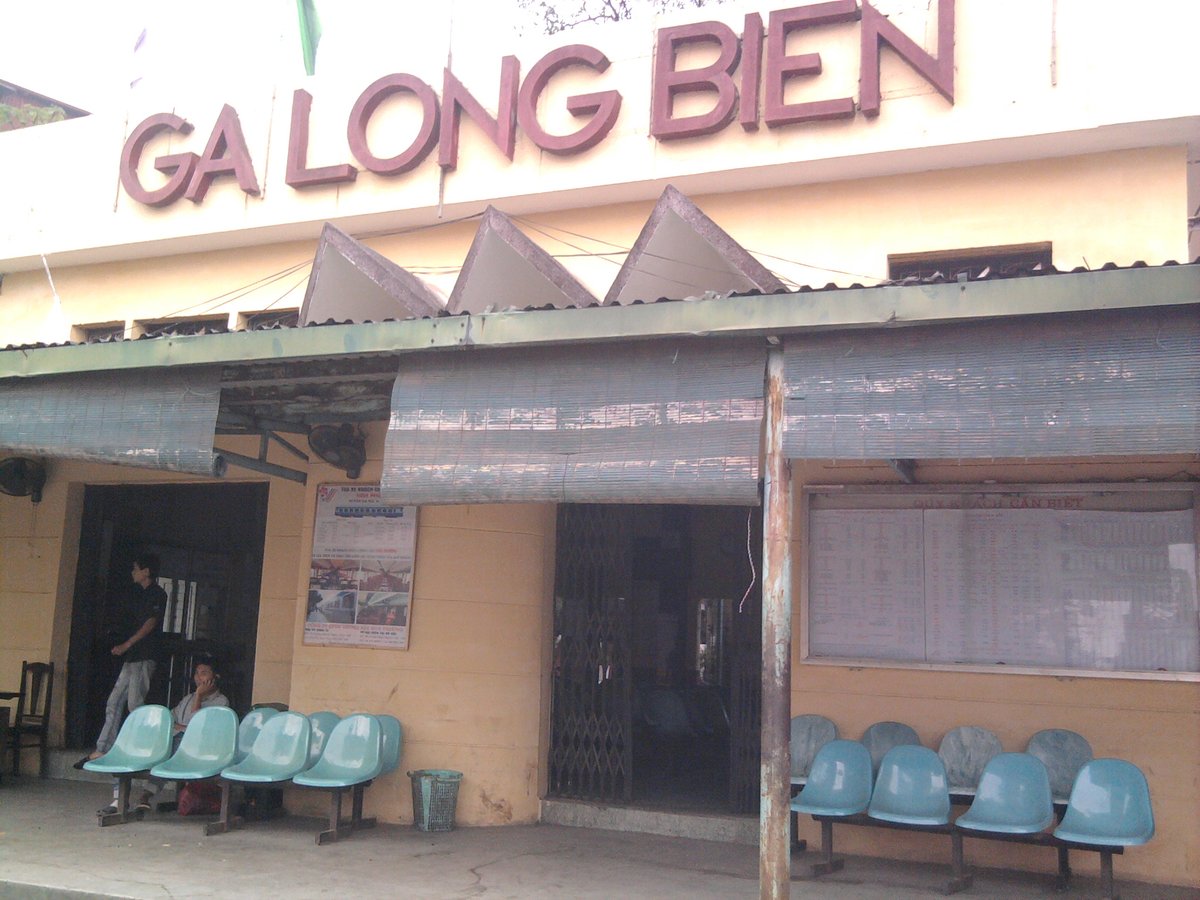
Long Biên Railway Station, Hanoi: Visiting Hours, Tickets, and Historical Insights
Date: 15/06/2025
Introduction
Long Biên Railway Station is one of Hanoi’s most evocative historical sites, serving not only as an active transit hub but also as a living monument to the city’s colonial past, wartime endurance, and ongoing cultural vibrancy. Established in the early 20th century alongside the iconic Long Biên Bridge, the station stands as a testament to Vietnam’s resilience and adaptability, connecting generations of travelers and threading together pivotal moments in the nation’s history. Conveniently located near Hanoi’s Old Quarter and Đồng Xuân Market, Long Biên Station offers access to northern destinations and immersive opportunities to experience local life and heritage.
This comprehensive guide details the station’s history, architecture, visiting hours, ticketing options, travel tips, and nearby attractions, ensuring travelers and history enthusiasts alike can make the most of their visit (historicvietnam.com; Vexere; Lepetitjournal).
Historical Background
Colonial Origins and Construction
Long Biên Railway Station was constructed between 1899 and 1902, alongside the then-Doumer Bridge (now Long Biên Bridge), as part of the French colonial administration’s ambitious plan to connect Hanoi with northern provinces and southern China. Designed by the French architect Daydé & Pillé, the bridge and station were crucial to the expansion of the Indochinese railway network, facilitating the movement of people, goods, and military personnel (historicvietnam.com). The station’s original architecture reflected French colonial sensibilities, with robust steel structures, arched doorways, and practical adaptations for Hanoi’s humid climate.
Symbolism and Early 20th-Century Role
Beyond infrastructure, Long Biên Station and its adjoining bridge symbolized French colonial power and technological prowess. The bridge’s initial configuration—a single railway track flanked by pedestrian walkways—highlighted both ambition and practical limitations, as motor vehicles continued to rely on ferries. In the early 20th century, the station became a linchpin for economic integration, connecting Hanoi with Hải Phòng and Lào Cai, and facilitating north-south trade (historicvietnam.com).
Wartime Resilience and Revolutionary History
Long Biên Station’s strategic importance grew during Vietnam’s wars. Following the First Indochina War, it witnessed the withdrawal of French troops and the triumphant entry of Việt Minh forces in 1954, marking the end of colonial rule. During the Vietnam War, both the station and bridge were repeatedly targeted in American airstrikes, underscoring their vital role in troop and supply movements. Despite severe damage, temporary repairs maintained rail connectivity, symbolizing the city’s resilience (historicvietnam.com).
Postwar Reconstruction and Preservation
Post-1973 reconstruction, aided by Soviet-supplied steel, restored the bridge and station to operational status, though only portions of the original architecture remain. Today, Long Biên Station is celebrated as a “living museum,” with preservation efforts seeking to balance modernization with heritage conservation (historicvietnam.com). Proposals for major renovations have sparked public debate, reinforcing the station’s significance in Hanoi’s collective memory.
Visiting Long Biên Railway Station Today
Location and Accessibility
Long Biên Railway Station is located at the eastern edge of Hanoi’s Old Quarter, on Trần Nhật Duật Street, Hoàn Kiếm District, adjacent to the Long Biên Bridge. It’s easily accessible by foot, bicycle, taxi, ride-hailing services, and several public bus routes (Nos. 01, 14, 15, 22, 34, 47, 55). The station is generally accessible, with ramps and staff assistance available for visitors with mobility challenges, though some older infrastructure may present minor obstacles (Vietnam Travel).
Visiting Hours
- Station: Open daily from 5:00 AM to 9:00–10:00 PM, depending on train schedules.
- Ticket Counters: Typically close around 9:30 PM.
Ticketing Information
Tickets for commuter and regional trains can be purchased at the station’s counters or online via the Vietnam Railways website and platforms like VeXeRe. Prices vary by route and class of service. For popular destinations such as Lào Cai (gateway to Sapa) and Hải Phòng, booking in advance is advisable, especially during holidays and peak travel times.
Train Services
Long Biên Station primarily serves local and regional routes to northern destinations, including Lào Cai, Hải Phòng, and Đồng Đăng. While long-distance and international services depart from larger stations like Hanoi Railway Station and Gia Lâm, Long Biên remains a vital commuter hub.
Architectural Features and Visitor Experience
Architecture
The station’s facade features arched doorways, multi-paned windows, and a blend of French colonial and local design elements. Inside, vintage benches and period clocks evoke a sense of nostalgia, while recent renovations have improved lighting and signage without compromising historical character. The station’s platforms are open-air and often bustling, providing lively scenes of daily commuter activity (lepetitjournal.com).
Atmosphere
Long Biên Station offers a unique window into Hanoi’s urban rhythms. Early mornings and late afternoons see a flurry of activity: commuters, vendors, and travelers converge, creating an authentic atmosphere that reflects the city’s enduring spirit.
Nearby Attractions
- Long Biên Bridge: An architectural icon and symbol of Hanoi’s resilience, accessible directly from the station. Ideal for walks, photography, and observing the Red River.
- Đồng Xuân Market: Hanoi’s largest market, renowned for food, textiles, and local products, a short stroll from the station.
- Hanoi Old Quarter: Famed for its vibrant streets, colonial architecture, and street food, easily reached on foot.
- Food Street (Chợ Ẩm Thực Ngọc Lâm): Across the bridge, offering local dishes and river views.
Practical Tips for Visitors
- Arrive Early: Experience the station’s dynamic morning atmosphere and avoid crowds.
- Advance Booking: Recommended during peak travel seasons for popular routes.
- Dress Comfortably: Wear suitable footwear for walking in and around the station and markets.
- Accessibility: While the station is ramp-accessible, some paths and bridge areas have uneven surfaces; assistance is available upon request.
- Language: English is not widely spoken; translation apps or local guides can be helpful.
- Payment: Cash (VND) is preferred at ticket counters; card acceptance may be limited.
Special Events and Tours
Long Biên Station occasionally hosts cultural events and is a popular location for wedding and fashion photography. Some local tour operators offer guided historical tours encompassing the station and Long Biên Bridge, providing in-depth insights into their significance.
Frequently Asked Questions (FAQs)
Q: What are the station’s visiting hours?
A: Open daily from 5:00 AM to 9:00–10:00 PM.
Q: How can I buy train tickets?
A: Purchase tickets at the station counter or online via VeXeRe or Vietnam Railways.
Q: Is the station accessible for travelers with disabilities?
A: Yes, ramps and assistance are available, though some areas may present minor obstacles.
Q: What are nearby attractions?
A: Long Biên Bridge, Đồng Xuân Market, the Old Quarter, and Food Street are all within walking distance.
Q: Are guided tours available?
A: Yes, local agencies offer tours focusing on the station and Hanoi’s railway history.
Visuals and Media
Enhance your visit by exploring photo galleries and virtual tours of Long Biên Station and Bridge available on official tourism websites. Alt-texts for images include: “Long Biên Station Hanoi facade,” “Historic railway platforms at Long Biên Station,” and “View of Long Biên Bridge from the station.”
Summary and Visitor Recommendations
Long Biên Railway Station embodies Hanoi’s layered history, serving as both a functional transportation hub and a cultural landmark. From its colonial origins and wartime endurance to its role in the city’s daily life, the station invites visitors to engage with Hanoi’s heritage in a tangible way. Its proximity to key attractions, accessible facilities, and ongoing preservation efforts make it an essential stop for travelers seeking both convenience and a deeper understanding of the city.
For a seamless travel experience, check current train schedules, book tickets in advance, and make use of mobile apps like Audiala for real-time updates and travel tips. Visiting Long Biên Station offers the chance to witness the enduring spirit and evolving identity of Vietnam’s capital.
Sources and Further Information
- Historic Vietnam: Long Biên Bridge & Railway Station
- VeXeRe: Train Services from Long Biên Station
- Lepetitjournal: Long Biên Station—A Journey Through History
- Vietnam Travel: Long Biên Bridge and Station
- Mapcarta
- Train Spread: Hanoi Stations
- The Crazy Tourist: Best Things to Do in Hanoi
